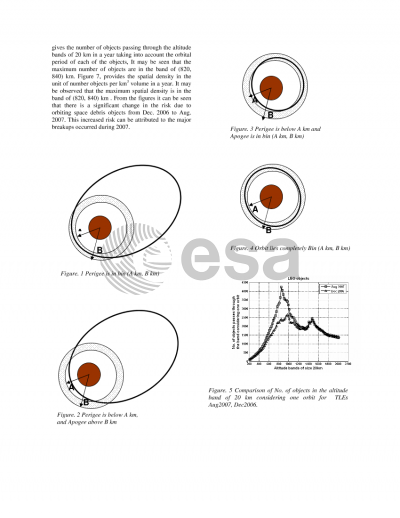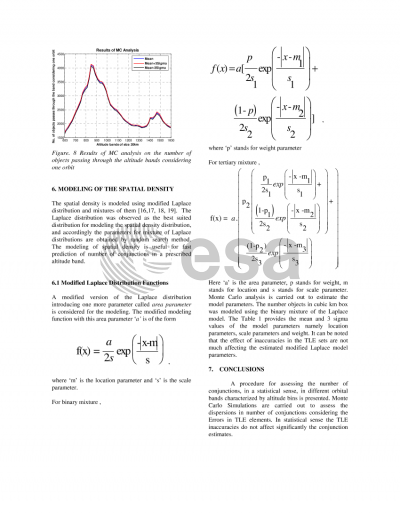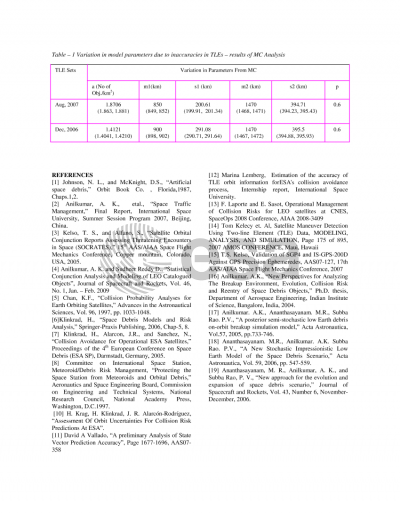Document details

Abstract
Conjunction assessments for the LEO space debris objects are essential to identify the risk and to take necessary mitigation measures to avoid possible collisions. The number of space debris objects in the Low Earth Orbits, especially in the Sun Synchronous Orbits, is alarmingly increasing and the recent fragmentation events occurred during the year 2007- 2009 added more risk in this region. A statistical conjunction analysis is a good tool for the primary mission design for a spacecraft launch. It will provide vital information on the over all risk in the specified orbit. With the first cut assessment using the statistical conjunction analysis, the orbital definitions can be modified to minimize the collision risks. In an earlier study, a methodology is presented to carry out statistical conjunction analysis of the LEO space objects. In this approach, the numbers of conjunctions in a prescribed altitude bin was estimated. The low Earth orbits, which are affected most by the accumulation of space debris objects, are analyzed using this approach with special emphasis on sun synchronous orbits and is observed that, after the major breakups happened recently, the number of conjunctions in the sun synchronous orbital region is very significant. The study is based on the catalogued objects from the two line element sets. TLEs come with its inherent data inaccuracies. Also the specified orbit of the spacecraft will have some dispersion on the orbital parameters at the design level. This paper utilizes the Monte Carlo approach to account for these uncertainties on the orbital parameters of catalogued objects and on the target object to obtain the expected number of conjunctions during a short term together with the error bands in number of conjunctions.
Preview







